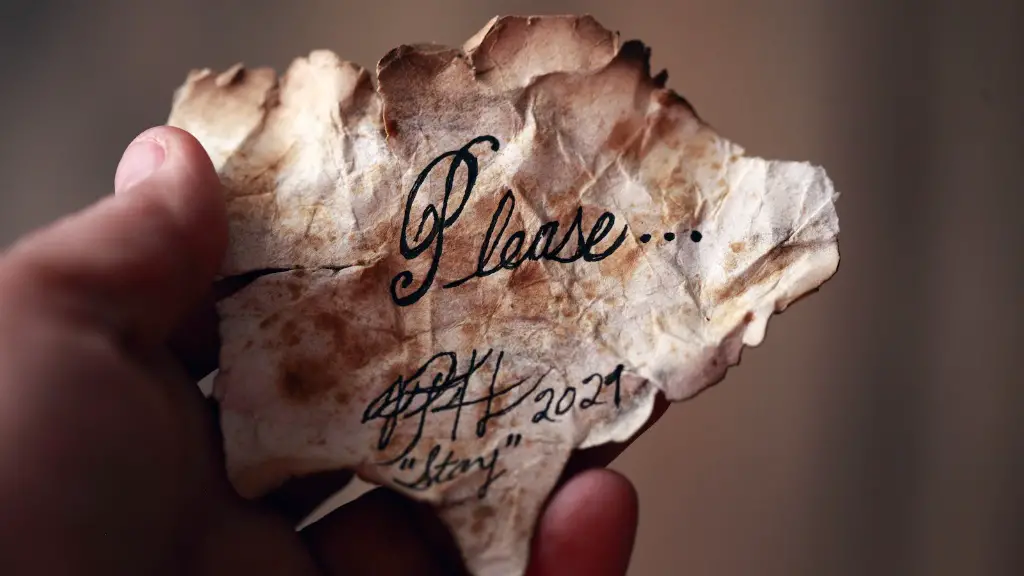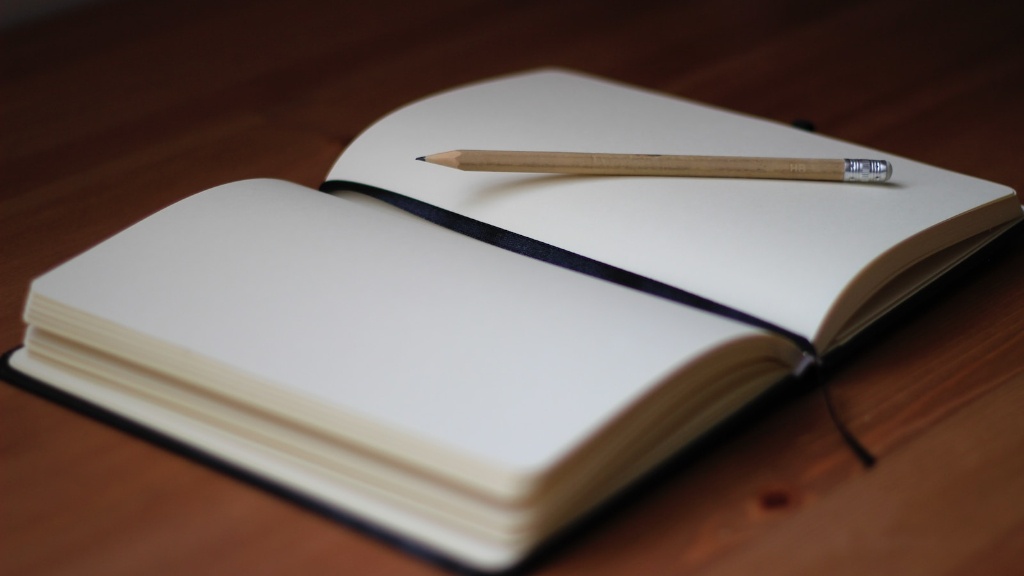Section 1
Poetry dates back to ancient times, with the oldest surviving poems being some of the oldest written documents known to man. They were composed in various ancient cultures such as Mesopotamia, Greece, and India. Poetry goes back even further to oral traditions in which stories, songs, and poems were passed down through generations by way of memorization and performance.
The earliest poems were often written in praise of gods and other important figures, and were meant to inspire awe and respect in the hearts of their audiences. Ancient Greeks, however, took their poetry to the next level by turning it into a form of entertainment. They crafted poems that were witty, clever, and often full of puns, creating an art form that evolved into something different from its original purpose.
One of the most well-known ancient poems is Homer’s “The Odyssey”. Written around the 8th century BCE, its story follows the hero Odysseus as he survives a ten-year war and makes his way back home to Ithaca. This epic poem still stands as an example of one of the greatest works of literature in history, and is one of the oldest known surviving poems.
In the Middle Ages, poetry began to take on a more serious tone. Religion had a strong influence as religious themes became more prominent in the works of many poets. Much of the poetry from this period reflected the people’s relationship with God, as well as their struggles with faith and morality.
The Renaissance saw the advancement of poetry in a very different way. Poetry became more refined, with a focus on beauty and visceral emotion, rather than the more philosophical and spiritual focus that had been so prominent during the Middle Ages. Writers such as Shakespeare, Milton, and Donne pushed the boundaries of what a poem could be, and their works are still studied and appreciated today.
In modern times, poetry has evolved into a genre of its own. With the advent of technology, poetry has seen a resurgence in recent decades, as the internet has revolutionized how poets can reach an audience. Poetry has become a way for people to express their feelings, tell stories, and even express their political opinions. Modern poets such as Langston Hughes, Adrienne Rich, and Sylvia Plath have become hugely influential figures in the poetry world, and their words continue to speak to people of all generations.
Section 2
Poetry has been a part of our lives for centuries, with many cultures, including the East and West, claiming to have some form of poetic tradition. While the form of poetry has evolved, it has remained a powerful tool for the expression of feelings, ideas, and memories.
When most people think of poetry, they think of the Western tradition, particularly lyrical poetry. This is a traditional form of poetry that tells stories of love, loss, nature, and beauty. It is usually composed in metrical form and seeks to evoke emotion and beauty in the words.
The East, on the other hand, is often associated with haiku, tanka, and other forms of short-form poetry. These are often characterized by brevity, imagery, and the observance of certain forms and conventions. While the East is often stereotyped as being rigid and strict in its forms, many Japanese poets have managed to find ways to push the boundaries of the traditionally rigid forms of their culture.
Another form of poetry gaining in popularity is spoken word poetry. This form of poetry was popularized in the late 20th and early 21st centuries, and has become an important medium for people to share their stories, feelings, and ideas in a more accessible way. Spoken word poems often include clever rhymes and powerful emotional triggers, allowing the poet to create an impactful performance.
The ability to write an effective poem comes from a strong understanding of the craft. The art of poetry requires practice, skill, and dedication. It is important for poets to understand the different forms and structures of poems, as well as how to play with language and create vivid imagery.
Section 3
The structure of poetry is an important part of the art form. There are various poetic forms and conventions that help to give the poem shape and structure. Poetic devices such as metaphor, simile, assonance, and alliteration, enjambment, and repetition can help to create engaging, powerful poems.
Poems may also have a specific meter, rhyme scheme, and line lengths, and if used properly, these can help to further enhance the poem and draw attention to specific words and phrases. Additionally, having a formal structure to follow can help a poet create a poem that is both meaningful and well-crafted.
Poetry is an art form that is enacted in performance, as well as through the written word. In order to craft an effective spoken word poem, the poet must take into account elements such as their delivery, vocal expressions, body movement, and audience interaction. It is important for the poet to practice their delivery and ensure that they are conveying the right message and evoking the desired emotion in the audience.
Section 4
The power of poetry has always had a great influence on our lives, with its ability to make us feel connected to a certain moment or feeling. Poetry has the ability to move us, to make us feel understood, and to provide comfort in a chaotic world. It is important to appreciate its power and continue to cultivate its use in the modern world.
Poetic writing has changed throughout its history, but the feelings and topics explored in the works have largely been the same. Poets have always sought to capture the truth of what it is to be human, and to bring solace and meaning to our lives. Even in times of uncertainty and change, poetry has remained a constant source of stability and inspiration.
Poetry also has a unique ability to unify people of diverse backgrounds. It can be used as a tool to bridge cultural gaps and inspire communication. There is a remarkable connection between the words of different poets, even when they are of wildly different backgrounds. The power of poetry is that it is universal, transcending age, language, religion, and location.
The uses for poetry have only grown more diverse in the modern world, with more and more people finding solace and meaning in the words of a poem. There is a growing appreciation for the power of poetry to make a difference, to unite people, and to bring beauty into the world.
Section 5
The mainstream embrace of spoken word poetry has grown rapidly in recent years. This is primarily due to the advances made in technology, as it has enabled more people to access live and recorded performances. With the power of technology, poets can now easily share their work with a global audience and create movements of support and engagement.
The use of social media has been particularly effective in growing the spoken word scene. With platforms such as YouTube, Instagram, Twitter, and TikTok, poets can directly reach their audience and connect with them in a much more personal and interactive way. This has allowed poets to connect with their fanbase on a deeper level and has also opened up doorways to collaboration and connection.
The technological revolution has also allowed poets to create innovative new works. Multimedia has become an important factor in modern poetry, as poets use a combination of visual and audio elements to create something truly unique. Technology allows poets to experiment with their work and push the boundaries of what a poem can look and sound like.
Section 6
The accessibility of technology has also allowed for some interesting new platforms for poetry to grow and evolve. Websites, apps, and platforms have made it easier for poets to share their work and connect with a larger audience. It also provides a great avenue for poets to receive feedback and allow their work to be critiqued and further developed.
Additionally, there are a variety of organizations and competitions that can help poets develop their skills and gain recognition. Organizations such as Poetry Out Loud provide an opportunity for poets to showcase their work, while competitions such as the National Poetry Competition and the American Poetry Slam allow poets to put their work up against their peers and challenge each other.
Section 7
Poetry has a special place in our culture and has been a source of comfort and inspiration for centuries. As technology and societal trends evolve and change, poetry has adapted with them and continues to be an important part of our lives.
The phenomenal advances in technology have enabled poets to expand their reach, allowing them to connect with a larger audience and open up new avenues for collaboration. Through multimedia, spoken word, and digital platforms, poetry has taken on a whole new life and has found new audiences.
The power of poetry to move us and to bring us together is something that we should never take for granted. Poetry has the potential to bring an extra layer of meaning, truth, and connection to our lives, and its importance to us should never be underestimated.

